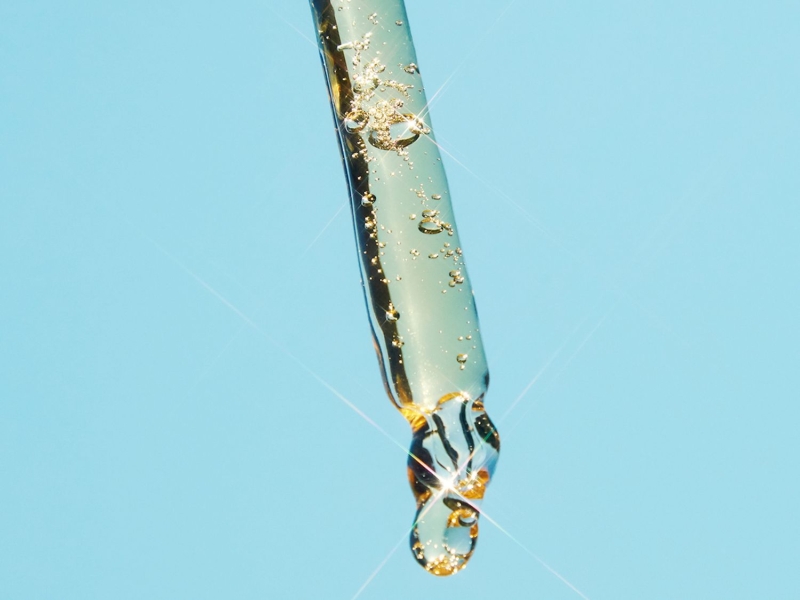Close

Can You Use Them Together? The Final Takeaway
In the vast world of skincare, there are countless moisturizing ingredients to choose from. However, Hyaluronic acid and squalane are among the most popular—and for good reason. Both ingredients have cropped up in formulas across makeup and skincare, touted for their lightweight feel and ability to work harmoniously with the natural skin barrier.
While the two may seem similar at first glance, hyaluronic acid and squalane have distinct properties and functions that set them apart. Depending on your needs, you may find one suits your routine better than the other. To answer all of your burning questions about the squalane vs. hyaluronic acid debate, we turned to board-certified dermatologists Rebecca Marcus, MD, and Blair Murphy-Rose, MD, FAAD. Ahead, they explain which buzzy ingredient is best for each skin type and the key differences to consider.
What Is Squalane?
Squalane is a lab-developed, hydrogenated form of squalene, which “is a naturally occurring lipid component of sebum that moisturizes skin,” says Murphy-Rose. “Squalane is an emollient that softens and smooths skin and helps to [lock] moisture in. [It] protects and supports the skin barrier and has antioxidant properties to reverse and prevent free radical damage.”
If you’re wondering what makes squalane distinct from squalene, Murphy-Rose explains that the former was developed to harness the skin benefits of squalene while making it more shelf-stable. This means squalane is, therefore, more suitable for use in skincare since squalene is an unstable molecule. As we age, the natural production of squalene declines, so these ingredients can be helpful if you’ve found your skin has become drier over time. “Squalane is also lighter than squalene and therefore suitable for acne-prone skin, unlike squalene,” Murphy-Rose adds.
What Is Hyaluronic Acid?
Hyaluronic acid is a hydrating molecule that can attract and hold water in the skin. “It is a natural component in the skin, eyes, and joints, and is used as a humectant, or a substance that draws moisture into the skin,” says Marcus.
Hyaluronic acid has an immediate plumping effect on the skin, which can reduce the appearance of fine lines. This makes the hydrophilic ingredient incredibly popular, and you've almost certainly seen brands highlight that their serums or moisturizers contain the supercharged yet gentle acid.
Squalane vs. Hyaluronic Acid: The Differences
The main difference between squalane and hyaluronic acid is their chemical makeup as well as the way they moisturize the skin, Murphy-Rose tells us. Here’s a mini science lesson to break it down: “Squalane is a lipid and hyaluronic acid is a glycosaminoglycan (basically a chain of sugar molecules),” Marcus explains. “Whereas hyaluronic acid is a humectant and draws water into the skin, squalene is an emollient, which means that it acts as a barrier and traps moisture in the skin.”
Still, the fact that they work differently doesn’t mean the two ingredients don’t have a lot in common. “Both help keep skin healthy and hydrated,” Murphy-Rose says. “Both are hypoallergenic and generally suitable for sensitive skin.”
“They are both hydrating molecules that help to improve skin moisture levels,” Marcus adds. “They are both naturally occurring in the body. Well, almost—squalene is naturally occurring, whereas squalane is a chemically modified form.”
Whether squalane or hyaluronic acid is better for you depends on a few key factors. “Both are highly effective ingredients for all skin types, including sensitive skin,” Murphy-Rose says. “Hyaluronic acid is great for hydrating oily or acne-prone skin because it is light and brings water to the skin’s surface without clogging pores. Squalane is a very effective ingredient for moisturizing dry skin, but it can also be used in formulations that will not exacerbate acne.”
How often to apply each depends on the type of product, such as a serum, lotion, or moisturizer, but Murphy-Rose generally recommends once to twice daily use. “Both work well in creams and lotions,” she says.
Can You Use Squalane and Hyaluronic Acid Together?
Yes, you can use squalane and hyaluronic acid together, whether through layering separate products or trying a formula that contains both. “If using separately, hyaluronic acid should be applied first, as it draws water into the skin,” Marcus advises. “Apply squalane afterward to create a barrier that will hold the moisture in the skin and prevent its evaporation.”
The Final Takeaway
Ultimately, hyaluronic acid and squalane are both standout skincare ingredients that have perks for most skin types. Given each ingredient helps replenish our skin's natural moisture processes, both are great options to try if you're dealing with dryness or dehydration—just make sure you find a formula that's tailored to your skin type overall. “Both are great for dry skin, acne-prone skin, inflamed skin, and even sensitive skin,” Marcus says. “It really comes down to personal preference.”


